The IT industry has recently seen a steady increase of distributed denial of service (DDoS) attacks. Years ago, DDoS attacks were perceived as minor nuisances perpetrated by novice attackers who did it for fun and it was relatively easy to mitigate them. Unfortunately, that situation is no more. DDoS attacks are now a sophisticated activity, and in many cases, big business.
InfoSecurity Magazine reported 2.9 million DDoS attacks in Q1 of 2021, an increase of 31% over the same period in 2020.
DDoS attacks rose 31% in Q1 2021 over the same period in 2020, to 2.9 million attacks
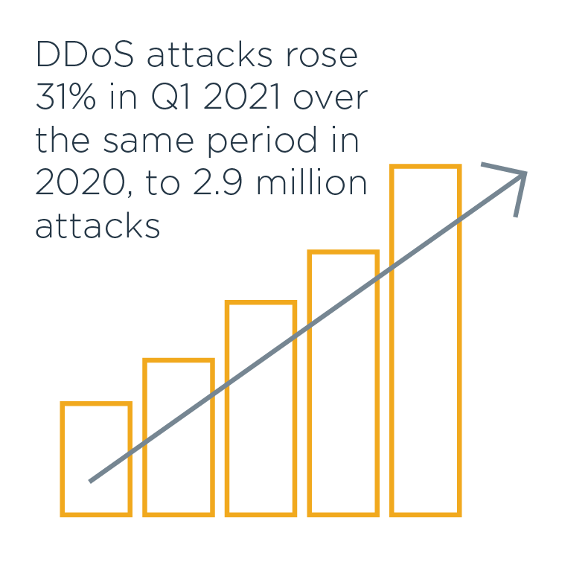
In recent years, we have seen an exponential increase in DDoS attacks that have incapacitated businesses for significant amounts of time.
Hundreds of thousands of unnamed, undocumented, yet successful DDoS attacks continue daily. In fact, it is these attacks that are the most effective and costly. The DDoS upward trend promises to continue, putting IT pros with mitigation skills in high demand.
Despite becoming more common, DDoS attacks can be quite advanced and difficult to combat. But what exactly is a DDoS attack and what does DDoS stand for?
DDoS is short for distributed denial of service. A DDoS attack occurs when a threat actor uses resources from multiple, remote locations to attack an organization’s online operations. Usually, DDoS attacks focus on generating attacks that manipulate the default, or even proper workings, of network equipment and services (e.g., routers, naming services or caching services). In fact, that’s the main problem.
Sophisticated DDoS attacks don’t necessarily have to take advantage of default settings or open relays. They exploit normal behavior and take advantage of how the protocols that run on today’s devices were designed to run in the first place. In the same way that a social engineer manipulates the default workings of human communication, a DDoS attacker manipulates the normal workings of the network services we all rely upon and trust.
When a DDoS attack takes place, the targeted organization experiences a crippling interruption in one or more of its services because the attack has flooded their resources with HTTP requests and traffic, denying access to legitimate users. DDoS attacks are ranked as one of the top four cybersecurity threats of our time, amongst social engineering, ransomware and supply chain attacks.
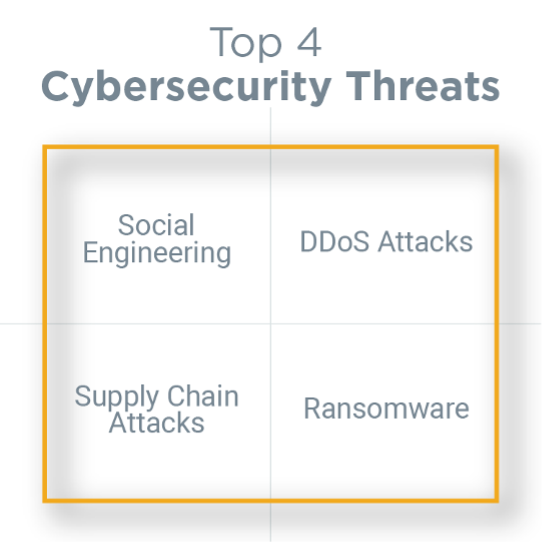
It’s relatively easy to confuse DDoS attacks with other cyberthreats. In fact, there is a significant lack of knowledge among IT pros and even cybersecurity professionals concerning exactly how DDoS attacks work.
In a DDoS attack, cybercriminals take advantage of normal behavior that occurs between network devices and servers, often targeting the networking devices that establish a connection to the internet. Therefore, attackers focus on the edge network devices (e.g., routers, switches), rather than individual servers. A DDoS attack overwhelms the network’s pipe, (the bandwidth) or the devices that provide that bandwidth.
Here’s a useful analogy: Imagine that several people call you simultaneously so that you can’t make or receive phone calls or use your phone for any other purpose. This problem persists until you block those calls through your provider.
Notice that you don’t fix, upgrade or otherwise make adjustments to your actual mobile device. Instead, you fix the connection between the attackers and your phone by using your mobile phone provider’s blocking service.
A similar thing happens during a DDoS attack. Instead of modifying the resource that is being attacked, you apply fixes (otherwise known as mitigations) between your network and the threat actor.
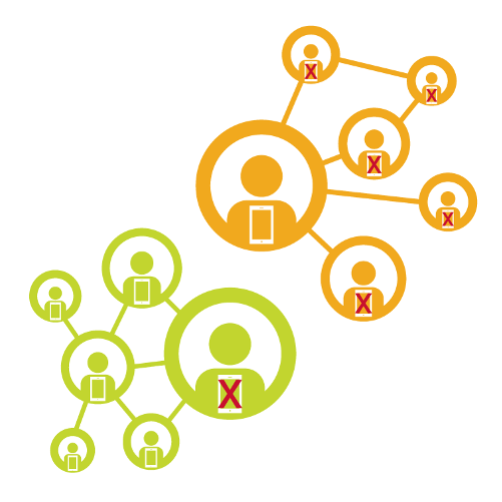
It’s important to avoid confusing a DDoS (distributed denial of service) attack with a DoS (denial of service) attack. Although only one word separates the two, these attacks vary significantly in nature.

Typical DoS attacks can include the following:
Each of the above DoS attacks take advantage of software or kernel weaknesses in a particular host. To resolve the issue, you fix the host, and/or filter out the traffic. If you can upgrade a server to mitigate an attack, then it doesn’t qualify as a traditional DDoS attack.
Remember, in a DDoS attack, the threat actor adopts a resource consumption strategy. This strategy involves using what appears to be legitimate requests to overwhelm systems which are, in fact, not legitimate, resulting in system issues.
There are three general types of DDoS attacks.
Application Layer attacks target the actual software that provides a service, such as Apache Server, the most popular web server on the internet, or any application offered through a cloud provider. This is the most common form of DDoS attack and is often referred to as Layer 7 attacks, after the corresponding number of the application layer in the OSI/RM.
This occurs when an attack consumes the resources of critical servers and network-based devices, such as a server’s operating system or firewalls. While those resources are overwhelmed, balancers are loaded. Protocol attacks often include manipulating traffic at layers 3 and 4 of the OSI/RM (the network and transport layers, respectively). This is the second most common form of DDoS attack.
Volumetric DDoS attacks focus on exploiting the normal operations of the internet to create tremendous floods of network traffic that then consume the organization’s bandwidth, making their resources unavailable. Contrary to popular opinion, most DDoS attacks do not involve high levels of traffic. Less than 1% of all DDoS attacks are volumetric. Volumetric attacks are simply covered in the news more often due to their sensational nature.
In some cases, IT and cybersecurity professionals consider protocol and application-based DDoS attacks to be one category.
DDoS attacks have become increasingly problematic, and IT pros need to be ready.
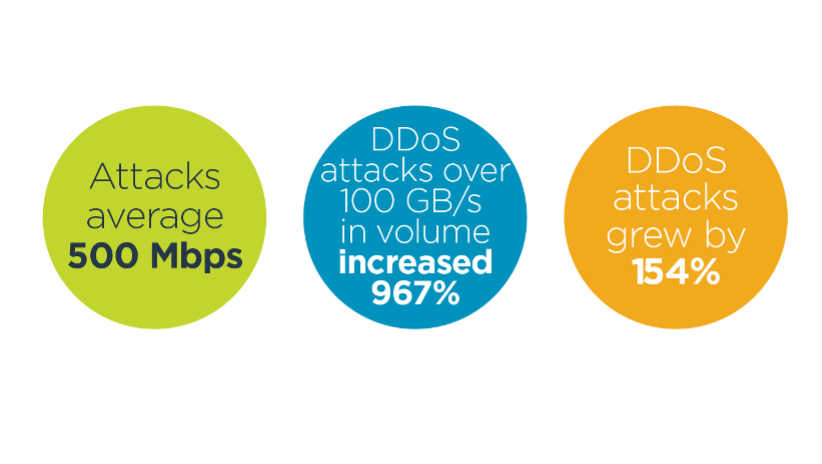
DDoS attacks are known to be cunning and therefore tricky to nail down. One of the reasons they are so slippery involves the difficulty in identifying the origin. Threat actors generally engage in three major tactics to pull off a DDoS attack:
By default, IPv4 and IPv6 do not have the ability to authenticate and trace traffic. With IPv4 networks especially, it is quite simple to spoof source and destination addresses. DDoS attackers take advantage of this issue by forging packets that have bogus source addresses. As a result, it is possible for an attacker to trick legitimate devices into responding to these packets by sending millions of replies to a victim host that never actually made a request in the first place.
Attackers usually want to hide any trace of their involvement in a DDoS attack. To do this, they manipulate the default behavior of internet services so that the services effectively hide the actual attacker. Services often used in these types of attacks include the thousands of Domain Name System (DNS), Network Time Protocol (NTP) and Simple Network Management (SNMP) servers. This is one of the primary reasons that attackers are attracted to a DDoS strategy. Internet services not only provide the traffic, but they also tend to make it more difficult for defenders to trace the origin of the attack because most servers don’t keep detailed logs of the services that have used them.
Amplification is a tactic that lets a DDoS attacker generate a large amount of traffic using a source multiplier which can then be aimed at a victim host. Amplification attacks don’t use a botnet, it is simply a tactic that allows an attacker to send a single forged packet which then tricks a legitimate service into sending hundreds, if not thousands, of replies to a victim network or server.
It’s very important to understand that DDoS attacks use normal internet operations to conduct their mischief. These devices aren’t necessarily misconfigured, they are actually behaving as they are supposed to behave. Attackers have simply found a way to exploit this behavior and manipulate it to conduct their DDoS attack.
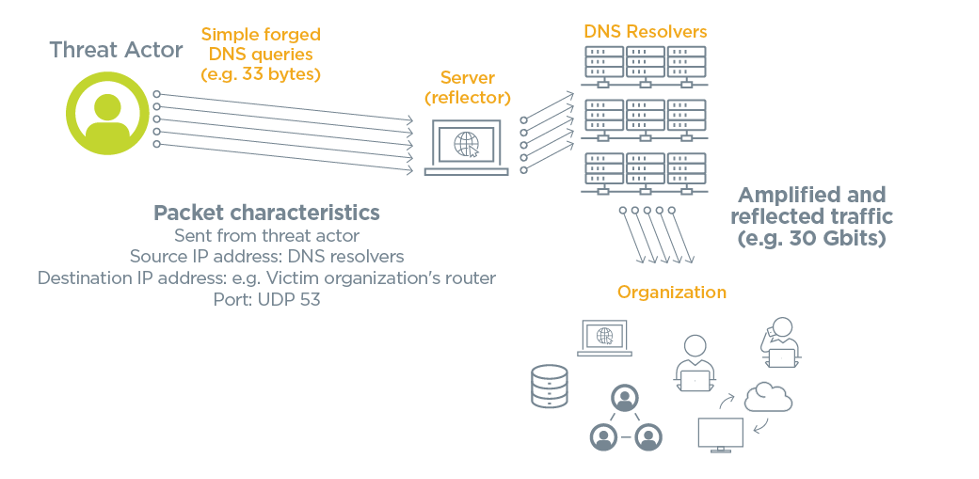
Additionally, network devices and services often become unwitting participants in a DDoS attack. These three tactics take advantage of the default behavior of network resources worldwide. These resources include:
DDoS attacks vary greatly in length and sophistication. A DDoS attack can take place over a long period of time or be quite brief:
Don’t be deceived. Despite being very quick, burst attacks can actually be extremely damaging. With the advent of internet of things (IoT) devices and increasingly powerful computing devices, it is possible to generate more volumetric traffic than ever before. As a result, attackers can create higher volumes of traffic in a very short period of time. A burst DDoS attack is often advantageous for the attacker because it is more difficult to trace.
Botnets, which are vast networks of computers, can be used to wage DDoS attacks. They are usually composed of compromised computers (e.g., IoT devices, servers, workstations, routers, etc.), or zombies, that are controlled by a central server.
Attackers don’t necessarily need a botnet to conduct a DDoS attack. Threat actors can simply manipulate the tens of thousands of network devices on the internet that are either misconfigured or are behaving as designed.
Nevertheless, it is important to understand how a botnet-based DDoS attack can occur.
One of the realities of cybersecurity is that most attackers are moderately talented individuals who have somehow figured out how to manipulate a certain network condition or situation. Even though there is often discussion about advanced persistent threats (APT) and increasingly sophisticated hackers, the reality is often far more mundane.
For example, most DDoS attackers simply find a particular protocol. They’ll discover that they can manipulate the transmission control protocol (TCP) handshake to create a flood attack of SYN packets or a particular type of server, such as the memory cache daemon (it is often called “Memcached,” for memory cache daemon). The Memcached service is a legitimate service frequently used to help speed up web applications. Attackers have often exploited Memcached implementations that are not properly secured, and even those that are operating properly.
Attackers have also discovered that they can compromise IoT devices, such as webcams or baby monitors. But today, attackers have more help. Recent advancements have given rise to AI and connective capabilities that have unprecedented potential. Like legitimate systems administrators, attackers now have voice recognition, machine learning and a digital roadmap that can allow them to manipulate integrated devices in your home or office, such as smart thermostats, appliances and home security systems.
DDoS traffic comes in quite a few different varieties. In the case of a botnet-based attack, the DDoS threat actor is using a botnet to help coordinate the attack. Understanding the types of traffic will help to select proactive measures for identification and mitigation. Click on the red plus signs to learn more about each type of DDoS traffic.
A botnet administrator, or a wrangler, uses a central server or network of servers to control the thousands of members of the botnet. Whenever a wrangler issues a command to control the botnet, this is called Command and Control (C&C) traffic. The actual administrator is usually far removed from the botnet or C&C server, and the network traffic is usually spoofed, often making detection difficult. The C&C operator then issues commands to manipulate network services and devices to create the DDoS attack.
The most effective DDoS attacks are highly coordinated. The best analogy for a coordinated attack involves comparing a DDoS botnet to a colony of fire ants. When a fire ant colony decides to strike, they first take a position and ready themselves for the attack. Acting under a single directive and without obvious warning, they wait for the signal and then act simultaneously.
Whenever a compromised system calls home to a C&C server, it is said to be beaconing. This traffic passing between a botnet member and its controller often has specific, unique patterns and behaviors. As a result, there is a small chance for security analysts to identify this traffic and treat it as a signature to disable a DDoS attack.
Atypical traffic involves using strategies such as reflection and amplification, usually at the same time.
Modern DDoS attacks combine different attack strategies, including the use of Layer 7, volumetric and even seemingly unrelated methods, such as ransomware and malware. In fact, these three attack types have become something of a trifecta and are becoming more prominent in the DDoS attack world.
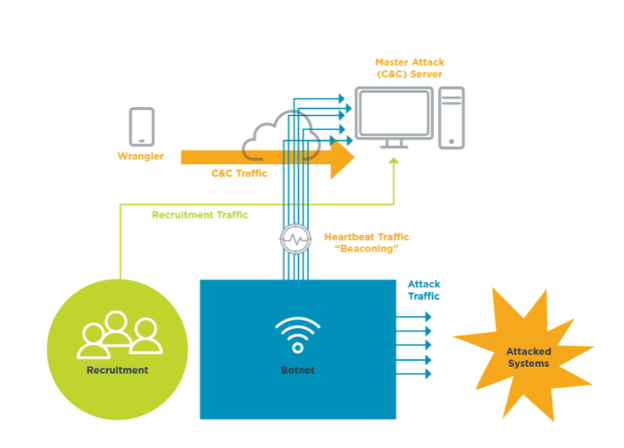
DDoS attacks take on many forms and are always evolving to include various attack strategies. It’s essential that IT pros equip themselves with the knowledge of how attacks work.
There are three models that can help provide insight into the inner workings of DDoS attacks:
As an IT pro, knowing how to approach a DDoS attack is of vital importance as most organizations have to manage an attack of one variety or another over time. Security analysts and threat hunters often use the ATT&CK model and the Mitre ATT&CK Navigator to help identify conditions that allow for DDoS attacks to be particularly successful.
There have been an exceedingly large number of distributed denial of service attacks over the years. Let’s begin with a short list of major DDoS attacks, the motivations behind them and the lasting impact they have on our digital world. Click on the red plus signs to learn more about each of these major DDoS attacks.
The DDoS attacks on Estonia occurred in response to the movement of a politically divisive monument to a military cemetery. To Russian-speaking Estonians, the statue represented Nazi liberation, but to ethnic Estonians, the monument symbolized Soviet oppression. Russian Estonians began rioting, and many were publicly outraged. The week of April 27, a barrage of cyberattacks broke out, most of them of the DDoS variety. Individuals used ping floods and botnets to spam and take down many financial institutions, government departments and media outlets. This attack is still regarded as one of the most sophisticated to date and is a solid example of a state-run DDoS attack.
In 2008, the Republic of Georgia experienced a massive DDoS attack, mere weeks before it was invaded by Russia. The attack appeared to be aimed at the Georgian president, taking down several government websites. It was later believed that these attacks were an attempt to diminish the efforts to communicate with Georgia sympathizers. Not long thereafter, Georgia fell victim to Russian invasion. This attack is considered to be the textbook example of a coordinated cyberattack with physical warfare. It is studied around the world by cybersecurity professionals and military groups to understand how digital attacks can work in tandem with physical efforts.
Infamously known as the “Attack that Almost Broke the Internet,” the Spamhaus incident was, at the time, the largest DDoS attack in internet history. The attack was prompted when a group named Cyberbunk was added to a blacklist by Spamhaus. In retaliation, the group targeted the anti-spam organization that was curtailing their current spamming efforts with a DDoS attack that eventually grew to a data stream of 300 Gbps.
The attack was so compromising that it even took down Cloudflare, an internet security company designed to combat these attacks, for a brief time.
The DDoS attacks that occurred during Occupy Central were an effort to cripple the pro-democracy protests that were occurring in Hong Kong in 2014. Two independent news sites, Apple Daily and PopVote, were known for releasing content in support of the pro-democracy groups.
Much larger than the Spamhaus attack, Occupy Central pushed data streams of 500 Gbps. This attack was able to circumvent detection by disguising junk packets as legitimate traffic. Many speculate the attack was launched by the Chinese government in an effort to squash pro-democracy sentiments.
A massive DDoS attack was launched against the DNS provider Dyn. The attack targeted the company’s servers using the Mirai botnet, taking down thousands of websites. This attack affected stock prices and was a wake-up call to the vulnerabilities in IoT devices.
The Mirai botnet comprised a collection of IoT-connected devices. The botnet was assembled by exploiting the default login credential on the IoT consumer devices which were never changed by end users. The attack impacted the services of 69 companies, including powerhouses such and Amazon, CNN and Visa.
One of the largest DDoS attacks in history was launched against GitHub, viewed by many as the most prominent developer platform. At the time, this was the largest DDoS attack in history. However, due to precautionary measures, the platform was only taken offline for a matter of minutes.
Attackers spoofed GitHub’s IP address, gaining access to Memcache instances to boost the traffic volumes aimed at the platform. The organization quickly alerted support, and traffic was routed through scrubbing centers to limit the damage. GitHub was back up and running within 10 minutes.
AWS is well known for being a leading provider of cloud computing services. The company, a subsidiary of the retail giant Amazon, sustained an impressive DDoS attack that kept their response teams busy for several days.
Reputed to be the largest of its kind to date, the DDoS attack on AWS in boasts an impressive onslaught of 2.3 Tbps, surpassing the previous leader of 1.7 Tbps. The AWS teams combatted the attack, finally mitigating the threat after a three-day incursion.
In a strange turn of events, Google reported a DDoS attack that surpassed the attack on Amazon, claiming it had mitigated a 2.5 Tbps incident years earlier. The attack originated from a state-sponsored group of cybercriminals out of China and spanned six months.
Google divulged the flood attack in late 2020 in an effort to draw awareness to an increase in state-sponsored attacks. The organization did not specify any loss of data due to the incident, but plans to enhance preventative measures to thwart the rise in attacks.
In recent years, multiple sectors have reported increasing rates of sector-specific DDoS attacks ranging from manufacturing and retail to financial institutions and even governments. The May, 2021 attack on the Belgium government affected more than 200 organizations. But it was specifically designed to disrupt the workings of their government. DDoS attacks on specific sectors can be used as political dissent or to signify disagreement with certain business practices or ideals.

You often see images of nefarious, dark-hooded individuals to symbolize the malicious threat actor. In reality, these groups of attackers are often well known to authorities and use DDoS tactics to gain influence, disrupt government and military operations or cause people to lose confidence in a market sector, company brand or long-established institution.
Regardless of the motivations that power these attacks, hackers can easily be hired to help launch a DDoS attack—available simply as guns for hire. Individuals or entire commercial groups are available for hire on the dark web, often under a service model, similar to that of infrastructure as a service (IaaS) or software as a service (SaaS). In fact, Radware issued a global security alert in August of 2020 in response to the expanding prevalence of DDoS-for-hire attacks.
In order to thwart DDoS attacks, it’s important to understand what drives the incident. While DDoS attacks vary greatly in nature when it comes to tactics and methods, DDoS attackers also may have a multitude of motives, including the following.
Attackers use several devices to target organizations. These are some common tools used in DDoS attacks:
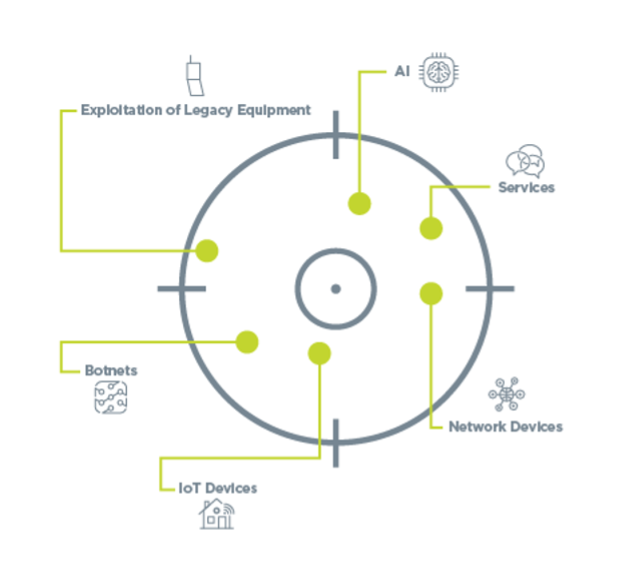
DDoS attackers get more and more savvy every day. Attacks are expanding in size and duration, with no signs of slowing. Organizations need to keep a finger on the pulse of incidents to understand how susceptible they may be to a DDoS attack.
Here are some resources that can help you keep track of the latest DDoS attacks:
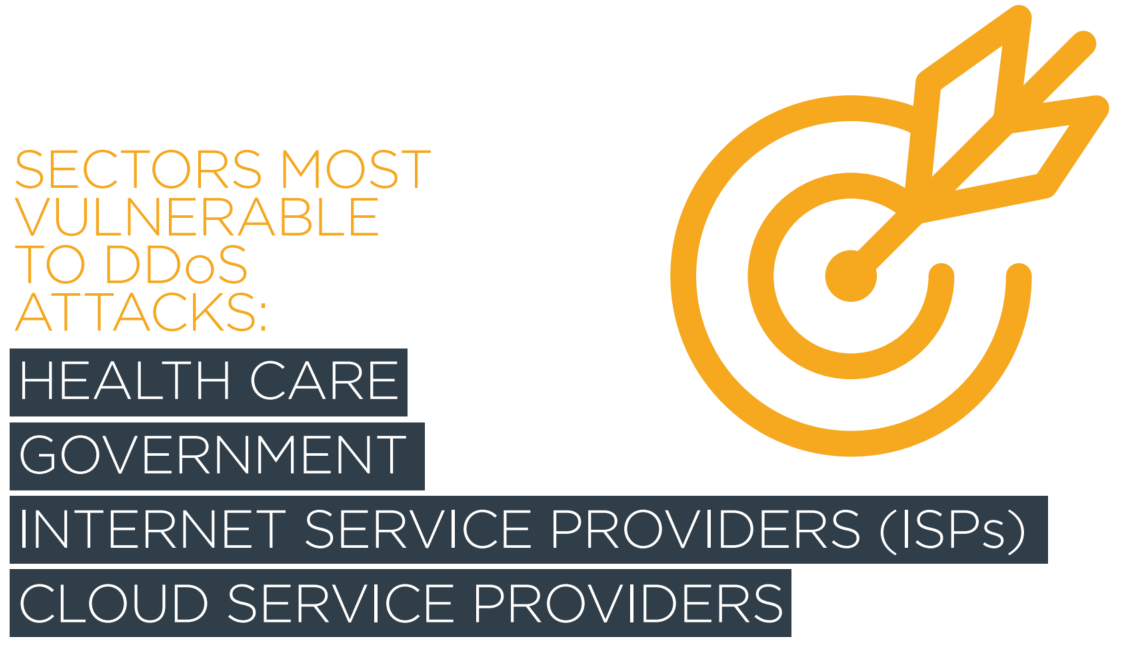
While organizations in any industry are vulnerable, these sectors are subject to DDoS attacks most often:
From a tactical DDoS mitigation standpoint, one of the primary skills you need to have is pattern recognition. Being able to spot repetitions that signify a DDoS attack is taking place is key, especially in the initial stages. Automated applications and AI are often used as helpers, but generally companies need a skilled IT professional to differentiate between legitimate traffic and a DDoS attack.
Workers often look for the following warning signs that a DDoS attack is taking place:
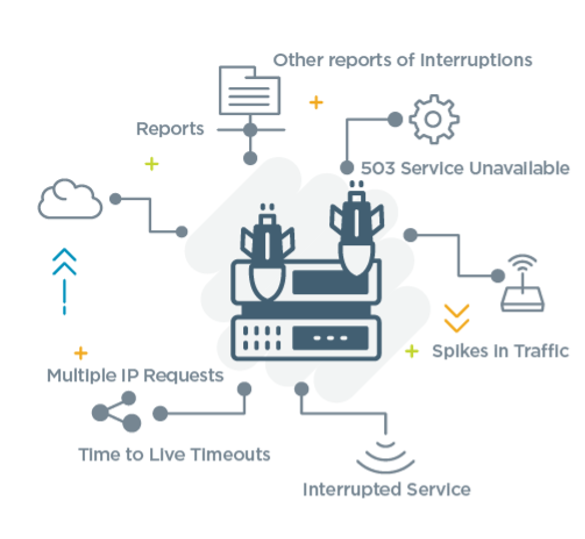
DDoS mitigation is quite different than mitigating other cyberattacks, such as those originating from ransomware. DDoS attacks are generally mitigated by devices and services that have been enabled to handle these types of attacks. For example, today’s load balancers are sometimes able to handle DDoS attacks by identifying DDoS patterns and then taking action. Other devices can be used as intermediaries, including firewalls and dedicated scrubber appliances.
When trying to mitigate a DDoS attack, you want to focus on placing services and devices between your network and the systems being used to attack you. Because attackers generate DDoS traffic by exploiting legitimate network and internet behavior, any connected device or server is vulnerable to an attack because it isn’t recognized as malicious in nature. You must create an intermediate mitigation solution to respond to that attack instead. In a ransomware or malware attack, security professionals generally solve the problem by upgrading the software on end points or restoring from backup.
Typical steps for responding to a DDoS attack include:
Early detection is critical for defending against a DDoS attack. Look for warning signs, provided above, that you may be a target. DDoS detection may involve investigating the content of packets to detect Layer 7 and protocol-based attacks or utilizing rate-based measures to detect volumetric attacks. Rate-based detection is usually discussed first when it comes to DDoS attacks, but most effective DDoS attacks are not blocked using rate-based detection.
A transparent filtering process helps to drop the unwanted traffic. This is done by installing effective rules on network devices to eliminate the DDoS traffic.
This step involves diverting traffic so that it doesn’t affect your critical resources. You can redirect DDoS traffic by sending it into a scrubbing center or other resource that acts as a sinkhole. It is typically recommended that you transparently communicate what is taking place so that employees and customers don’t need to change their behavior to accommodate slowness.
Understanding where the DDoS attack originated is important. This knowledge can help you develop protocols to proactively protect against future attacks. While it may be tempting to try and kill off the botnet, it can create logistical problems and may result in legal ramifications. Generally, it is not recommended.
It is possible to use alternate resources that can almost instantaneously offer new content or open up new networking connections in the event of an attack.
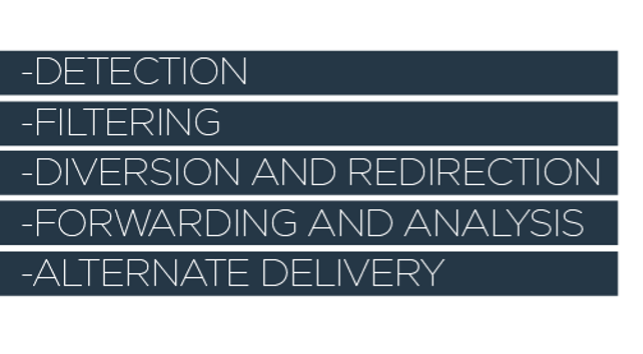
One of the best ways to mitigate a DDoS attack is to respond as a team and collaborate during the incident response process. The steps outlined above can only be achieved through a combination of services, devices and individuals working together. For example, to mitigate Layer 7 DDoS attacks it is often necessary to do the following:
Once you know you are facing a DDoS attack, it’s time for mitigation. Prepare for the fight!
| Physical devices | Managing physical devices during a DDoS attack has largely remained a separate category from other mitigation efforts. Often called appliances, physical devices are kept separate because DDoS patterns and traffic are so unique and difficult to properly identify. Even so, devices can be very effective for protecting small businesses from DDoS attacks. |
| Cloud scrubbing devices | Often called scrubbing centers, these services are inserted between the DDoS traffic and the victim network. They take traffic meant for a specific network and route it to a different location to isolate the damage away from its intended source. The scrubbing center cleans the data, only allowing legitimate business traffic to pass on to the destination. Examples of scrubbing services include those provided by Akamai, Radware and Cloudflare. |
| Multiple internet service connections | Because DDoS attacks often seek to overwhelm resources with traffic, businesses sometimes use multiple ISP connections. This makes it possible to switch from one to another if a single ISP becomes overwhelmed. |
| Black hole | This DDoS mitigation technique involves using a cloud service to implement a strategy known as a data sink. The service channels bogus packets and floods of traffic to the data sink, where they can do no harm. |
| Content delivery network (CDN) | This is a group of geographically distributed proxy servers and networks often used for DDoS mitigation. A CDN works as a single unit to provide content quickly via multiple backbone and WAN connections, thus distributing network load. If one network becomes flooded with DDoS traffic, the CDN can deliver content from another unaffected group of networks. |
| Load balancing servers | Generally deployed to manage legitimate traffic, load balancing servers can also be used to thwart DDoS attacks. IT pros can utilize these devices to deflect traffic away from certain resources when a DDoS attack is under way. |
| Web application firewall (WAF) | Used to filter and monitor HTTP traffic, WAFs are often used to help mitigate DDoS attacks and are commonly part of cloud-based services such as AWS, Azure or CloudFlare. While sometimes effective, a dedicated device or cloud-based scrubber is often recommended instead. A WAF focuses on filtering traffic to a specific web server or application. But a true DDoS attack focuses on network devices, thus denying services eventually meant for the web server, for example. Still, there are times when a WAF can be used in conjunction with additional services and devices to respond to a DDoS attack. |
Almost all DDoS mitigation devices on the market use the same five mechanisms:
Hundreds of organizations provide devices and services intended to help you prevent or combat a DDoS attack. A small sample of these services and devices is shown below.
DDoS Mitigation Vendor | Services Offered |
Offers protection against Layer 3 and Layer 4 attacks. Available to all customers at no extra charge. Additional protection for Layer 7 attacks is available for a fee. | |
Solutions include cloud-based, on-premise and hybrid protection completely focused on thwarting DDoS attacks. | |
Layer 3, 4 and 7 services for free, as well as more sophisticated DDoS protection services for a fee. | |
| Akamai | A highly respected service for help against volumetric DDoS attacks. Akamai owns many sites around the world to help identify and filter traffic. |
| AppTrana | Focuses on Layer 7 as well as volumetric (Layer 3 and 4) DDoS traffic. |
| Alibaba DDoS | Specializes in mitigating volumetric attacks. |
Click the red plus signs for more details on the eight ways you can prepare for a DDoS attack.
If you don’t have a defined security policy, then creating one is the first step. If your policy is older or hasn’t considered modern DDoS methods and issues, it’s time to make a few changes.
Business-critical services are those that would cause operational delays if affected. These might include systems such as database, web, commerce server, customer relationship management (CRM), custom programming, AI, machine learning, streaming and data collection, among others. It may also be necessary to outline all business-critical applications running on your web servers. You can then make decisions based on the sample matrix, located below.
Store mission-critical information in a CDN to allow your organization to reduce response and recovery time.
Larger organizations will want to have multiple ISPs ready in case one becomes flooded with traffic or can’t provide an essential filtering service in time. As an alternate or complementary solution, you could also engage a third-party scrubbing service that filters out DDoS traffic.
It is important to back up server resources, as well as workstations and other devices.
A DDoS preparation scheme will always identify the risk involved when specific resources become compromised.
The last thing an organization wants to do is assign responsibility for DDoS response during or after an actual attack. Assign responsibility before an attack happens.
Similar to other areas of expertise, the best way to know how to respond to a DDoS attack is to practice. Schedule dedicated training sessions and practice combatting attacks in a controlled environment.
When dealing with a DDoS attack, there are certain best practices that can help keep a situation under control. Observe these DDoS attack do’s and don’ts.
| What to Do When Dealing with a DDoS Attack | What NOT to Do When Dealing with a DDoS Attack |
|---|---|
| Overcommunicate with management and other workers. Leadership needs to be informed and involved so that the necessary steps are taken to limit damage. | Overcommunicate with the public. To limit damage to your brand’s reputation and ensure you have the attack contained, only provide necessary information to the public. |
| Delegate tasks. A DDoS attack means all hands on deck. Enlist other IT pros to report back and follow up with quick updates. | Assume that it is someone else’s responsibility to handle the attack. These attacks must be dealt with quickly, and waiting to hand off responsibility can cost valuable time. |
| Focus on root-cause analysis. Uncovering the cause of the attack can be vital when attempting to slow the progression. | Try to solve the problem alone. DDoS attacks can escalate very quickly. Enlisting others in your mitigation efforts will help curb the attack more quickly. |
| Conduct mock exercises for DDoS attacks. This may involve planned or surprise exercises to properly educate IT pros, staff and management on response activities. | Make the assumption that IT pros, staff or management know what to do during a DDoS attack. Without proper training, these attacks can be damaging, and many employees lack the practical skills to counteract the hack. |
| Work with ISPs, cloud providers and other service providers to determine the costs related to the DDoS attack. Get a report from all providers. To move past the attack, you need to know exactly what you are dealing with and have documentation to illustrate it. | Presume old reports are still valid. Any reports older than six months or that involve data from before a company merger or major business change should not be considered sound data. |
With so many as-a-service options, it can be difficult to know which services to engage as part of an effective DDoS prevention strategy. This DDoS mitigation matrix should help you understand how to place your services appropriately.
| Service | Location | Mitigation Tactic |
|---|---|---|
| Web server | Company server room | Installed on the on-premise Web Application Firewall (WAF) |
| Database server | Public cloud | Load balancer, cloud-based DDoS mitigation server |
| Credit card-accepting commerce server | Private cloud | Load balancer, cloud-based DDoS mitigation server, alternate ISP |
| Virtual Desktop Infrastructure (VDI) hosts for end users | Public cloud | Cloud-based DDoS protection service, alternate ISP, |
| Network infrastructure | On-premise | Multiple alternate ISPs, cloud scrubbing service |
Your matrix would, of course, vary according to your business-critical resources. It’s also important to remember that outsourcing still requires internal support. If you purchase a costly mitigation device or service, you need someone in your organization with enough knowledge to configure and manage it.
There are times when it is useful to simply outsource for a skillset. But, with DDoS attacks and others, it is always best to have internal expertise. Otherwise, you may end up with a situation where an outsourced expert has made changes to your DDoS protection suite, but then moves on to another organization.
As an IT pro, you can take steps to help ready yourself for a DDoS attack. Check out the following skills and tools that can help you successfully manage an incident.
Employers will want to know that you are armed with the skills necessary for combatting a DDoS attack. Adding these skills to your toolset will help illustrate your ability to thwart attacks.

Standards such as the U.S. National Institute of Standards and Technology (NIST) Special Publication (SP) 800-61 provide a helpful foundation for knowing how to respond to attacks of various types. The IT industry also uses the ISO/IEC 27035-1:2016 standard as a guideline for incident response procedures. As a general rule, organizations with a reputation for responding well to incidents tend to use such standards as helpful guidelines, rather than absolute rules to follow.
IT pros can also benefit from seeing demonstrations of attacks to learn how data behaves in particular situations. Take the time to view demonstrations of the following attacks:

Ongoing education is essential for any IT pro. Technology advances every day, and IT pros that stagnate will eventually be deemed unnecessary as legacy systems die off and new platforms take their place. To remain relevant, it’s important to continue educating yourself.
The standards and practices taught in the industry will also help you and your organization respond to DDoS attacks. One way to obtain the appropriate level of knowledge is to learn the standards and best practices covered by the IT certifications found in the CompTIA Cybersecurity Pathway.
| Endpoints | Cloud | Servers | Red Team | Blue Team | Network Security |
|---|---|---|---|---|---|
Download the exam objectives for the above CompTIA exams to see what’s covered and decide which one is right for you.
Want to know more about DDoS attacks and stay up to date on the latest in cybersecurity? Subscribe to CompTIA’s IT Career News for weekly digests and a monthly newsletter dedicated to cybersecurity, cloud computing, computer networking, tech support and more.
Download CompTIA’s free Quick Response Guide to DDoS Attacks with tips and tricks for mitigation and response so you’re ready to protect your organization at a moment’s notice.
Download the GuideRead more about Cybersecurity.
Tags : Cybersecurity